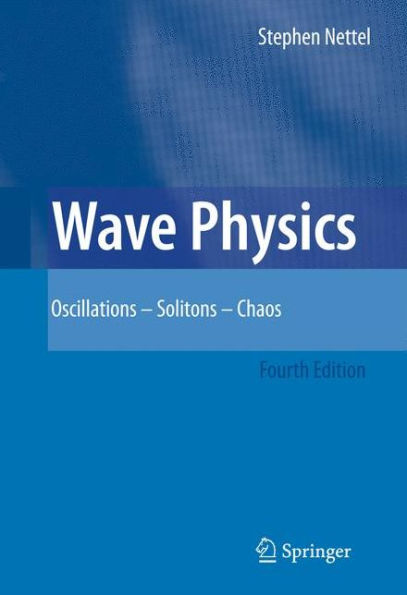Wave Physics: Oscillations - Solitons - Chaos
This is a text for the third semester of undergraduate physics for students in accelerated programs, who typically are preparing for advanced degrees in science or engineering. The third semester is often the only opportunity for physics departments to present to students who are not physics majors a coherent background in the physics of waves, required later for confident handling of applied problems, especially applications based on quantum mechanics. Physics is a coherent subject. It is often found that the going gets easier as one goes deeper, learning the mathematical connections tying together the various phenomena. Even so, the steps that took us from classical wave physics to Heisenberg's "Physical Principles of Quantum Theory" were, as a matter of history, harder to take than later steps dealing with detailed applications. With these considerations in mind, the classical physics of os cillations and waves is developed here at a more advanced mathematical level than is customary in second year courses. This is done to explain the classical phenomena, but also to provide background for the introductory wave mechanics, leading to a logical integration of the latter subject into the presentation. Concurrently, detailed applications of quantum mechanics are beyond the mission of the text. The concluding chapters on nonlinear waves, solitons, and chaos broaden the previously established concepts of wave behavior, while introducing the reader to important topics in current wave physics.
1139942704
Wave Physics: Oscillations - Solitons - Chaos
This is a text for the third semester of undergraduate physics for students in accelerated programs, who typically are preparing for advanced degrees in science or engineering. The third semester is often the only opportunity for physics departments to present to students who are not physics majors a coherent background in the physics of waves, required later for confident handling of applied problems, especially applications based on quantum mechanics. Physics is a coherent subject. It is often found that the going gets easier as one goes deeper, learning the mathematical connections tying together the various phenomena. Even so, the steps that took us from classical wave physics to Heisenberg's "Physical Principles of Quantum Theory" were, as a matter of history, harder to take than later steps dealing with detailed applications. With these considerations in mind, the classical physics of os cillations and waves is developed here at a more advanced mathematical level than is customary in second year courses. This is done to explain the classical phenomena, but also to provide background for the introductory wave mechanics, leading to a logical integration of the latter subject into the presentation. Concurrently, detailed applications of quantum mechanics are beyond the mission of the text. The concluding chapters on nonlinear waves, solitons, and chaos broaden the previously established concepts of wave behavior, while introducing the reader to important topics in current wave physics.
69.99
In Stock
5
1

Wave Physics: Oscillations - Solitons - Chaos
289
Wave Physics: Oscillations - Solitons - Chaos
289Paperback(Fourth Edition 2009)
$69.99
69.99
In Stock

Product Details
| ISBN-13: | 9783540879077 |
|---|---|
| Publisher: | Springer Berlin Heidelberg |
| Publication date: | 12/11/2008 |
| Edition description: | Fourth Edition 2009 |
| Pages: | 289 |
| Product dimensions: | 6.10(w) x 9.20(h) x 0.90(d) |
About the Author
From the B&N Reads Blog
